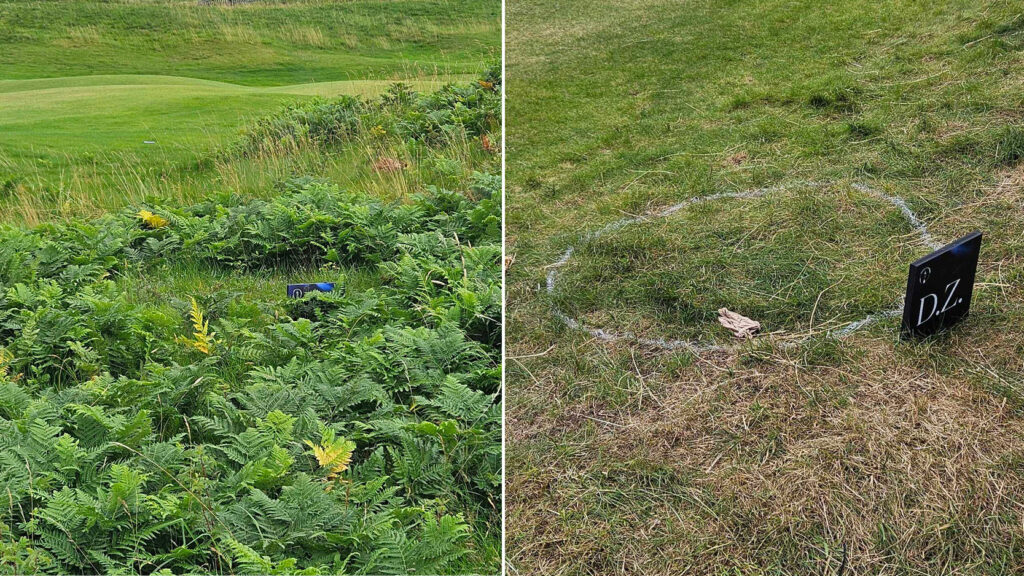The Impact of Drop Zones on Professional Golf vs. Amateur Play
Golf, a sport steeped in tradition, exhibits a distinct divide between the playing conditions of professional athletes and amateur enthusiasts. Understanding the myriad differences reveals the complexities of the game, particularly the often-overlooked role of drop zones. In this article, we will explore the advantages that professionals have when navigating the course, scrutinizing how drop zones can significantly alter the competitive landscape.
Understanding the Advantages of Professional Golfers
Professional golfers possess access to various benefits that enhance their performance on the course. From meticulously maintained greens to designated ball spotters, these advantages create a level of convenience not available to amateur players. For instance, professional players often putt on surfaces that are groomed to perfection, ensuring minimal interference from imperfections that might affect the ball’s trajectory. This level of care is a far cry from the conditions that many weekend players encounter, who contend with unkempt fairways and unpredictable lies.
The Role of Drop Zones in Professional Golf
Drop zones serve as critical areas on the course where players can place their ball when specific unplayable situations occur. While amateurs occasionally have access to similar privileges, the circumstances under which they utilize these spots differ greatly from their professional counterparts. Amateur players typically find themselves in drop zones after unfortunate mishaps, such as balls landing in a water hazard or dense rough. For professionals, however, drop zones often come into play in high-stakes situations where strategic considerations and course layout come into play.
Examining the Drop Zones at Major Events
At major tournaments, such as The Open Championship, strategically placed drop zones offer professionals a lifeline during critical moments. Various grandstands are positioned throughout the course, providing a place for fans to immerse themselves in the action. However, these structures also create additional complications for golfers. When a player’s ball lands in or around the grandstands, they have the opportunity to drop near these areas, which raises the question of fairness and strategy.
Are Drop Zones Fair to Professionals?
One key question in the realm of professional golf revolves around the fairness of drop zones. The R&A, responsible for overseeing The Open Championship, has taken a clear stance that drop zones should not serve as "bail-out" options for errant shots. Their philosophy emphasizes that these zones should maintain a level of challenge that aligns with the high skillset of professional players. Consequently, many drop zones are designed to test a player’s skill and decision-making, contrasting starkly with the often more forgiving amateur drop zone situations.
The Challenges of Drop Zones at Royal Portrush
During the 2025 Open at Royal Portrush, the severity of drop zones illustrated the skill level required to excel at professional golf. For example, the drop zone near the 15th green posed challenges that were anything but forgiving. Players faced the daunting task of making critical decisions under pressure, knowing that a poor drop could complicate their next shot considerably. In situations where a player misses the green by a significant margin, the variance in difficulty between professional and amateur experiences becomes starkly visible.
The Impact of Tough Drop Zones on Strategy and Decision-Making
The strategic placement of challenging drop zones forces professional golfers to think critically about their game plan. Decisions become multifaceted, involving assessment not just of the immediate shot but also of subsequent options. When drop zones require additional skillful play, professionals must adapt their strategies accordingly, heightening the competition and enhancing the viewer experience. This dynamic illustrates how the pressure of professional play differs vastly from the often more casual approach taken by amateur players.
Addressing Pace of Play Concerns
While tough drop zones add layers of complexity to competition, they also introduce challenges regarding pace of play—an ongoing concern in the golfing community. Difficult drop zones may result in prolonged decision-making, as players contemplate their next move in critical situations. As the clock continues to tick, the balance between maintaining the integrity of the game and keeping matches moving forward becomes increasingly important.
Should Drop Zone Policies Be Revisited?
As the dialogue around drop zones continues, many are left wondering whether policies should be re-evaluated. Professional golfers advocate for settings that challenge their skillset, yet the balance between harsh repercussions for poor shots and maintaining a fluid pace of play is delicate. Striking the right balance ensures that the game remains competitive and engaging while preserving the timeless nature of golf itself.
The Future of Drop Zones in Competitive Golf
As golf evolves, the future of drop zones remains a topic of discussion among players, officials, and fans alike. Should drop zones become stricter, or should they remain as strategic elements designed to foster skillful play? As the sport progresses, it is essential to adapt and consider different perspectives on how drop zones may continue to impact the competitive landscape within professional golf.
Conclusion: What Lies Ahead for Drop Zones in Golf?
In summary, understanding the differences between professional and amateur golfing experiences reveals a complex web of factors that influence performance. Drop zones, while seemingly straightforward, serve as pivotal points that can drastically affect outcomes in both professional and amateur play. As the debate continues, it invites golfers worldwide to consider their role within the sport and how the landscape of golf may evolve in the years to come.
As fans of the game, we encourage you to share your thoughts on whether drop zones in professional golf provide a fair advantage or if additional measures should be implemented. Your opinions are vital in shaping the future of golf.


